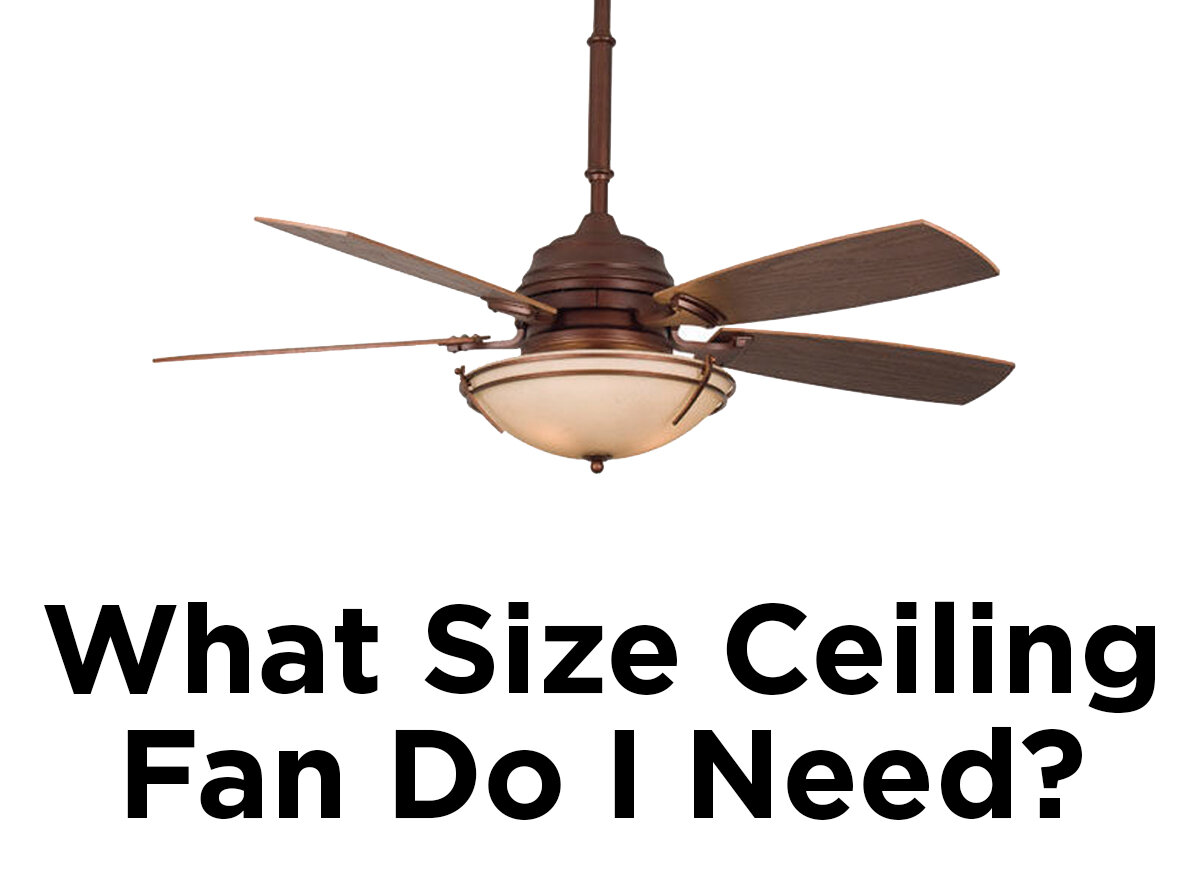What Kind of Ceiling Fan Do I Need?
If you’ve read part 1 of our ceiling fan guide, you’ve already seen how many choices there are to consider just in mounting and sizing ceiling fans. But ceiling fans are also broken down by ratings for energy efficiency, speed, location, and light sources. Acronyms like HP, RPM, and CFM can be confusing without previous exposure, and the addition of energy efficient options like DC motors or LED light kits can add to that confusion. Even if your fans are already installed, it’s never a bad idea to review new options for upgrades.
Ratings
The two most important certification ratings you’ll find are the ENERGY STAR and UL ratings. Ceiling fans with an ENERGY STAR rating are typically 20% more efficient than fans without the rating. UL ratings give you an idea of how the fan is best used and where you should or should not place the ceiling fan.
Dry Locations: Indoors only. Dry location rated ceiling fans should only be used indoors and should not be placed in rooms where humidity is an issue.
Damp Locations: Any place that does not come into direct contact with water. Damp location rated ceiling fans can handle moisture such as steam or mist, but should never come into direct contact with intense weather or water.
Wet Locations: Indoors or outdoors. Wet location rated fans are sealed against water so they can be used outside under covered awnings.
You’ll also find fans labeled for Horse Power (HP), Revolutions per Minute (RPM), and Cubic Feet per Minute (CFM). All of these specs give you a different way to compare fans against each other, but they are not interchangeable.
Horse power is a direct measurement of the power in the fan motor itself. A higher HP motor will allow for longer blades and faster rotations, but unless you’re in the habit of converting between values, it will only give you a ball-park figure. However, it is useful for seeing fan efficiency. For example: If you have two fans with identical diameters, the same number of blades, and equal CFM ratings, the fan with a lower horse power motor will run more efficiently since it requires a less powerful motor to operate. On the other hand, using a more powerful motor will lead to a longer lifespan since it won’t be as stressed throughout its lifetime.
The revolutions per minute rating simply states how many times the fan will rotate each minute. Higher RPM fans will move more air than lower RPM fans of the same size. While a high RPM will tell you how fast your fan moves, CFM is a much better metric for measuring fans. A fan’s CFM measures the rate of airflow around a fan in cubic-feet of air moved per minute. CFM automatically considers blade pitch, number, length, and RPM, making it the best comparison tool between fans. Remember: The higher the CFM rating, the stronger the breeze created by your fan.
Light Kits
We’ve covered the benefits of different types of light sources before, so I’ll be brief. While some ceiling fans are designed with built in LED light kits, most fans use standard candelabra or Edison-base sockets for traditional lights. The benefits of incandescent, LED, or fluorescent lights still apply, with incandescents being the easiest to dim and cheapest to replace. However, it should be noted that ceiling fans decrease the life of incandescent and fluorescent lightbulbs due to vibration, making them ideal for use with LED light bulbs. Energy cost is also an important consideration, as a 100-watt AC motor with four 60-watt incandescent light bulbs gives you a 340-watt fixture.
AC and DC Motors
There are many differences between AC and DC motors. Many of these are differences in specs such as slip (the lag between motor start, and actual revolutions) and overall torque. For a consumer, these elements aren’t all that important. The major distinction between a DC fan and an AC fan is that a DC motor will give an instant start of rotation and is up to 70% more efficient than a traditional AC fan. DC motors are also quieter when compared to AC motors. Unfortunately, DC fans are slightly more expensive due to the more complicated conversion circuitry used.
All of these ratings help you to focus your purchase based on what’s important to you. Do you need a specialized fan for a porch? If so, look for a wet location rated fan. If your concern is energy efficiency, look for a DC fan and use an LED light kit. Select the features that matter most to you, then match specs accordingly. Have any other questions? Comment below or leave us a message through Facebook, Twitter, LinkedIn, Pinterest, or Instagram and be sure to check Part 3 of our Ceiling Fan guide!







